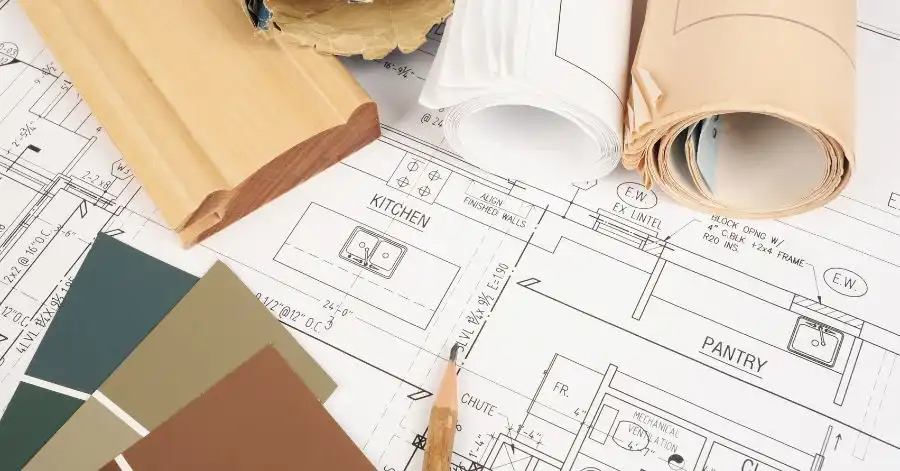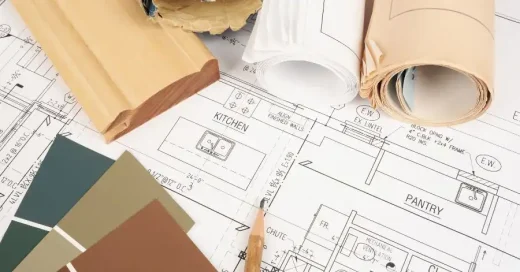Save money on home renovation steps, Permanent house refurb design guide
11 Easy Steps to Save Money for Home Renovation
6 November 2024
Saving for a home renovation project can feel like a daunting task, especially when balancing daily expenses. However, with a well-planned approach and disciplined saving habits, you can build the funds needed to achieve your renovation goals without stretching your budget too thin.
From setting a clear budget to automating savings and reducing non-essential spending, this guide covers practical steps to help you save for home improvements. These tips are designed to make the process manageable and keep you motivated as you work towards your dream renovation.
1. Set a Clear Renovation Budget
The first step in saving for your renovation is to set a clear, realistic budget. Research the costs associated with your project, including materials, labour, and permits. Make sure to include a buffer of around 15-20% for unexpected expenses.
By having a well-defined budget, you’ll know exactly how much you need to save and can plan accordingly. Breaking down the budget into individual elements, like flooring, fixtures, and painting, helps you track expenses accurately and makes the process less overwhelming.
2. Prioritise Early Debt Repayment
If you have outstanding debts, such as credit card balances, short term loans, emergency loans, etc., it’s wise to focus on paying these off before saving for a renovation. High-interest debt can quickly consume your income, leaving less room for savings. By repaying debt early, you free up more income to allocate towards your renovation fund.
Additionally, being debt-free gives you greater financial flexibility and peace of mind as you plan your renovation. Consider adjusting your budget to prioritise debt repayment, which will ultimately make it easier to save.
3. Open a Dedicated Savings Account
Opening a separate savings account specifically for your renovation fund helps you stay organised and avoid using the money for other expenses. Look for a high-interest savings account or an Individual Savings Account (ISA) to help your funds grow over time. Setting up a dedicated account makes it easier to track your progress, stay motivated, and reach your savings goal faster.
By keeping your renovation funds separate, you’ll be less tempted to dip into them for everyday purchases, ensuring the money is ready when you need it.
4. Create a Realistic Savings Timeline
Setting a realistic timeline for your renovation savings is essential for staying on track. Calculate how much you can save each month based on your budget and income, and determine how long it will take to reach your target.
Having a clear timeline helps you manage expectations and avoid the stress of rushing the process. If possible, plan your renovation to coincide with quieter financial periods, giving yourself extra time to save without compromising other financial goals. A well-structured timeline keeps your savings efforts manageable and achievable.
5. Automate Your Savings
Automating your savings is one of the easiest ways to ensure that you consistently contribute to your renovation fund. Set up a standing order or direct debit that automatically transfers a fixed amount into your dedicated savings account each month.
By automating the process, you’ll make saving a priority without having to think about it. This “set it and forget it” approach helps you build your fund over time, ensuring that your renovation goal stays on track. Automating savings also reduces the temptation to spend the money on non-essential items.
6. Cut Back on Non-Essential Spending
Review your monthly expenses and identify areas where you can reduce non-essential spending. Cutting back on dining out, entertainment subscriptions, or luxury purchases can free up extra money for your renovation fund. Even small adjustments, like making coffee at home or reducing impulse buys, can add up over time.
Redirect the money saved from these changes directly into your renovation account. By being mindful of your spending habits and making conscious choices, you’ll be able to reach your savings goal faster without compromising on the essentials.
7. Earn Extra Income for Your Renovation Fund
If you’re looking to boost your renovation fund more quickly, consider finding ways to earn extra income. This could include taking on freelance work, selling unwanted items, or starting a side hustle. Any additional income you generate can go directly into your savings account, helping you reach your goal sooner.
Exploring multiple income streams not only increases your financial security but also helps you save for your renovation without having to rely solely on your primary income. Even small amounts from extra work can make a difference over time.
8. Use Cashback and Rewards Programmes
Using cashback and rewards programmes is a simple way to save money on your everyday purchases. You can also take advantage of loyalty schemes offered by banks or retailers. The cashback and rewards you earn can be added to your renovation fund, giving you an extra boost without any additional effort.
Regularly using these programmes can make a noticeable difference in your savings over time.
9. Buy Materials in Bulk or During Sales
Materials can be one of the biggest expenses in a home renovation, but you can save by purchasing items in bulk or waiting for sales. Plan ahead and buy materials like tiles, paint, and fixtures when discounts are available.
Look for clearance sales at hardware stores or online to reduce costs. Buying in bulk often results in better deals, especially for frequently used items. By timing your purchases strategically, you’ll be able to stay within budget and reduce the overall cost of your renovation.
10. DIY Where Possible
Taking on some DIY tasks can save you a considerable amount of money on labour costs. While it’s essential to leave certain jobs to professionals, there are many tasks, like painting, tiling, or assembling furniture, that you can do yourself. Research techniques, watch tutorials, and invest in quality tools to ensure a good result.
DIY work not only reduces expenses but also gives you a sense of accomplishment and personal connection to your renovation project. Just remember to know your limits and hire experts for complex or safety-critical tasks.
11. Track Your Progress Regularly
Tracking your savings progress helps you stay motivated and ensures you’re on the right path to reaching your renovation goal. Review your budget and account balance each month to see how much you’ve saved and where you might need to adjust.
By regularly monitoring your progress, you can make necessary changes to your savings plan and stay accountable. Tracking also allows you to celebrate small milestones along the way, keeping you motivated and focused on achieving your renovation goal.
11 Easy Steps to Save Money for Home Renewal Conclusion
Saving for a home renovation requires discipline and planning, but by following these 11 steps, you can make the process manageable and rewarding. From setting a clear budget and timeline to using cashback and reducing non-essential expenses, these tips will help you build your renovation fund without financial stress.
With careful planning and regular contributions, you’ll be ready to transform your space in no time, making your renovation dreams a reality without breaking the bank.
Comments on this guide to Save money on home renovation steps article are welcome.
Home Renovation
Home Renovation Posts
Home renovations transforming space
Making Your Home Renovation Hassle Free
Before Taking on a Home Renovation Project
Building Articles
Residential Architecture – selection:
Comments / photos for the 11 Easy Steps to Save Money for Home Renovation page welcome.





